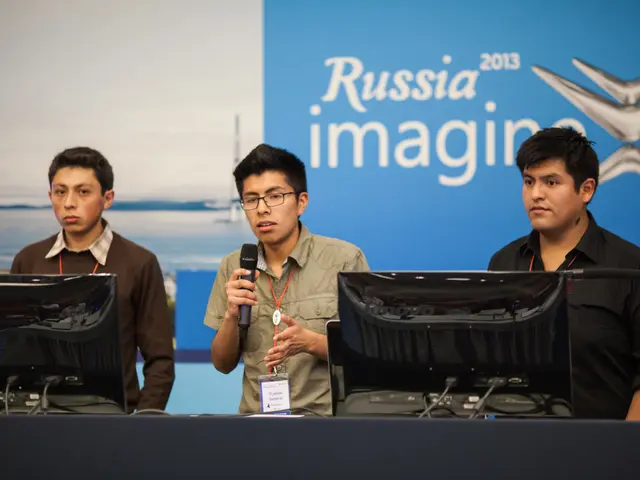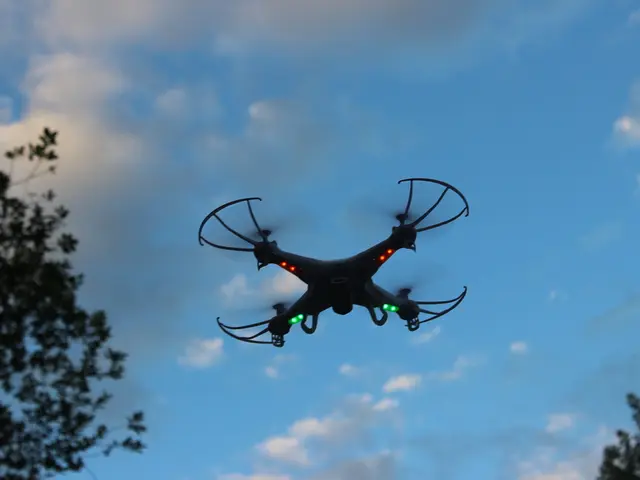The Thriving Underground AI Chip Market: A New Tech Cold War
International Competition Over Black-Market Artificial Intelligence Semiconductors
Welcome to the clandestine world of smuggled AI chips, where a modern-day arms race is playing out beneath the radar, in secret labyrinths and vetted supply chains across the globe. As the U.S. tightens the reins on exporting advanced Nvidia GPUs like the A100 and H100, an underground economy has sprouted, detouring around these sanctions. Nations, corporations, and back Alley connectors—with China at the forefront—are capitalizing on covert pathways to procure these contraband chips, essential for advancing artificial intelligence.
With world politics brewing and tech sovereignty hanging in the balance, this clandestine market serves as a major flashpoint in the broader AI hardware struggle.
At a Glance
- The clandestine market for smuggled AI chips preys on tightened export controls, with Nvidia's GPUs at the epicenter.
- Governments, businesses, and intermediaries are deploying deceptive methods to outmaneuver U.S. restrictions, predominantly in China.
- Illicit sales of GPUs can trigger price increases two to three times higher than legal markets.
- This high-stakes landscape echoes Cold War-era tech embargoes and plays a significant role in shaping the global direction of AI infrastructure development.
Don't Miss: *Amazon Keeps Pace with AI Chip Advancements*
The Roots of the AI Hardware Black Market
As the U.S. Department of Commerce clamped down on China's access to high-performance semiconductors in 2022, the resulting vacuum galvanized a black market. This restriction placed a target on Nvidia's A100 and H100 chips, as concerns centered on national security issues.
In response, tech-thirsty Chinese cloud servers, research labs, and tech firms scrambled for alternatives. The seeds of the black market were sown, mirroring the covert tech acquisitions of the Cold War era. Back then, embargoed Eastern Bloc nations used similar under-the-table tactics to obtain restricted Western technologies critical for defense and computing.
The Allure of Nvidia Chips
Nvidia's A100 and H100 GPUs are non-negotiable powerhouses for modern AI development. These chips accelerate deep learning, generative models, and large-scale computing like no other. Training AI models, managing computer vision tasks, and propelling commercial AI systems are all reliant on them.
The H100, with its 80 billion transistors, running on the Hopper architecture, can train models up to six times faster than preceding GPUs. Given its performance and global rivalry sweeping the domestic AI chip market, demand soars, despite the risks and challenges associated with smuggling.
Don't Miss: *Artificial Intelligence - A Journey Through Dangers and Dark Corners*
The Art of Smuggling AI Chips
The black market trade in AI chips operates through an intricate, imaginative network. Here are some common tactics:
- Front Companies: Businesses are established in countries with lenient regulations, like Singapore or the UAE, where they can legally purchase Nvidia chips and then redirect them to embargoed destinations.
- Repackaging and Transshipment: GPUs are transported through locations such as Hong Kong, Taiwan, or Malaysia. They are then rebranded or disguised to evade detection before reaching their final destination in Mainland China.
- Independent Brokers: Agents or traders in Southeast Asia assist in facilitating deals, often accepting anonymous cryptocurrency payments to maintain transactional secrecy.
These strategies allow restricted territories to continue accessing cutting-edge AI hardware, as international authorities relentlessly work to shut down such networks.
Still Curious?: *Nvidia Makes a Monopoly of AI Chips; Upstarts Respond*
The Pricing Divide: A Sharp Contrast
The price disparity between legal and illegal sales is substantial. In open markets like the U.S. or Europe, an Nvidia A100 typically costs anywhere from $10,000 to $15,000. In China, where these chips face strict regulations, the same unit demands prices around $40,000 according to multiple sources and gray market listings.
Bulk buyers, like Chinese tech firms, often pay this premium to urge AI development forward to avoid delays. Some brokers even offer all-inclusive packages, including door-to-door delivery and forged customs paperwork, to reduce risk for buyers.
The Geopolitical Perspective: Sanctions, Sovereignty, and Strategic Response
This isn't merely about profit; it's all about power. Illicit acquisitions of advanced AI chips are part of a broader geopolitical contest. China has devoted billions to their sovereign chip manufacturing efforts, but their output can't compete with the power and efficiency of Nvidia's hardware.
Various other nations are playing their part in shaping these parallel trade networks:
- India: Positioned as an emerging chip fabrication hub, although its role as a conduit for re-export activities is increasingly under scrutiny.
- Russia: In search of both Chinese suppliers and independent channels to bypass domestic chip shortages.
- Southeast Asia: Countries like Vietnam and Thailand are becoming key transit hubs, sparking increased customs enforcement and surveillance.
This situation resembles Cold War strategies, where embargoed nations worked through global intermediaries to acquire critical computing systems needed for defense and national vitality.
Worth Your Time: *Global AI Arms Race Unfolds Up Close*
The Experts Weigh In: Enforcement and Escalation
William Reinsch, a former U.S. government trade official, commented, "A sanction will always have leaks. The harder you push, the more inventive the smuggling networks become. It's not a question of if chips will reach these countries—it's just how quickly."
Industry analyst Angela Zhang added, "What we're dealing with isn't only illegal trade. It's a structural circumvention of geopolitical limitations. This is causing profound discussions about technology sovereignty and the risks in globalized production."
As a response, the U.S. Bureau of Industry and Security ramps up investigations, strengthens audits, and builds shared monitoring infrastructure in key logistics zones. AI-powered analytics are deployed to track unusual shipping routes and flag potential suspicious actors.
A Reawakening of Cold War Tensions: Digital Divide 2.0
The current chip competition echoes the U.S.-Soviet tech face-off that defined the late 20th century. Then, black market operations focused on acquiring supercomputers and integrated circuits to bridge strategic gaps. Now, it's about GPUs and AI accelerators driving the ongoing battle.
Despite the export bans, the Soviet Union eventually scored restricted technologies through proxy states and intermediary channels. History seems to be repeating itself, but the implications may be greater now, as AI plays a central role in modern economics, surveillance, and military functions.
The Future: Innovation or Escalation?
Enforcement efforts aim to choke off the illicit flow of AI chips, but this pressure could propel domestic innovation in restricted nations. Internet titans like Baidu, Huawei, and SenseTime are pouring resources into next-generation GPU designs. However, their efforts are still several years behind the performance of Western alternatives.
Some warn that the continuation of bans and smuggling may broaden the global digital divide. Nations without access to elite compute resources could potentially fall behind in AI-driven healthcare, cybersecurity defense, and education technology. In such a scenario, the black market becomes more than a short-term fix—it becomes a long-term liability and dependency.
References
Brynjolfsson, Erik, and Andrew McAfee. The Second Machine Age: Work, Progress, and Prosperity in a Time of Brilliant Technologies. W. W. Norton & Company, 2016.
Marcus, Gary, and Ernest Davis. Rebooting AI: Building Artificial Intelligence We Can Trust. Vintage, 2019.
Russell, Stuart. Human Compatible: Artificial Intelligence and the Problem of Control. Viking, 2019.
Webb, Amy. The Big Nine: How the Tech Titans and Their Thinking Machines Could Warp Humanity. PublicAffairs, 2019.
Crevier, Daniel. AI: The Tumultuous History of the Search for Artificial Intelligence. Basic Books, 1993.
- In the underground AI chip market, deep learning, computer vision, and cybersecurity technologies are all heavily dependant on smuggled Nvidia GPUs like the A100 and H100, essential for advancing artificial intelligence.
- Tech-thirsty Chinese entities, as well as those in India, Russia, and Southeast Asia, are employing deceptive methods to obtain these contraband chips, sometimes at prices two to three times higher than those on legal markets, in order to drive research and development in AI and maintain their global competitiveness.








